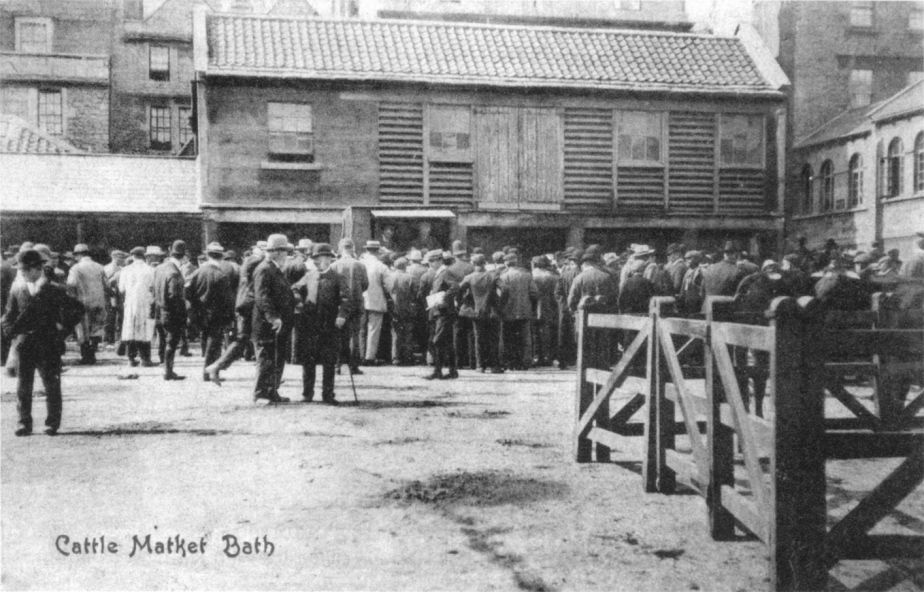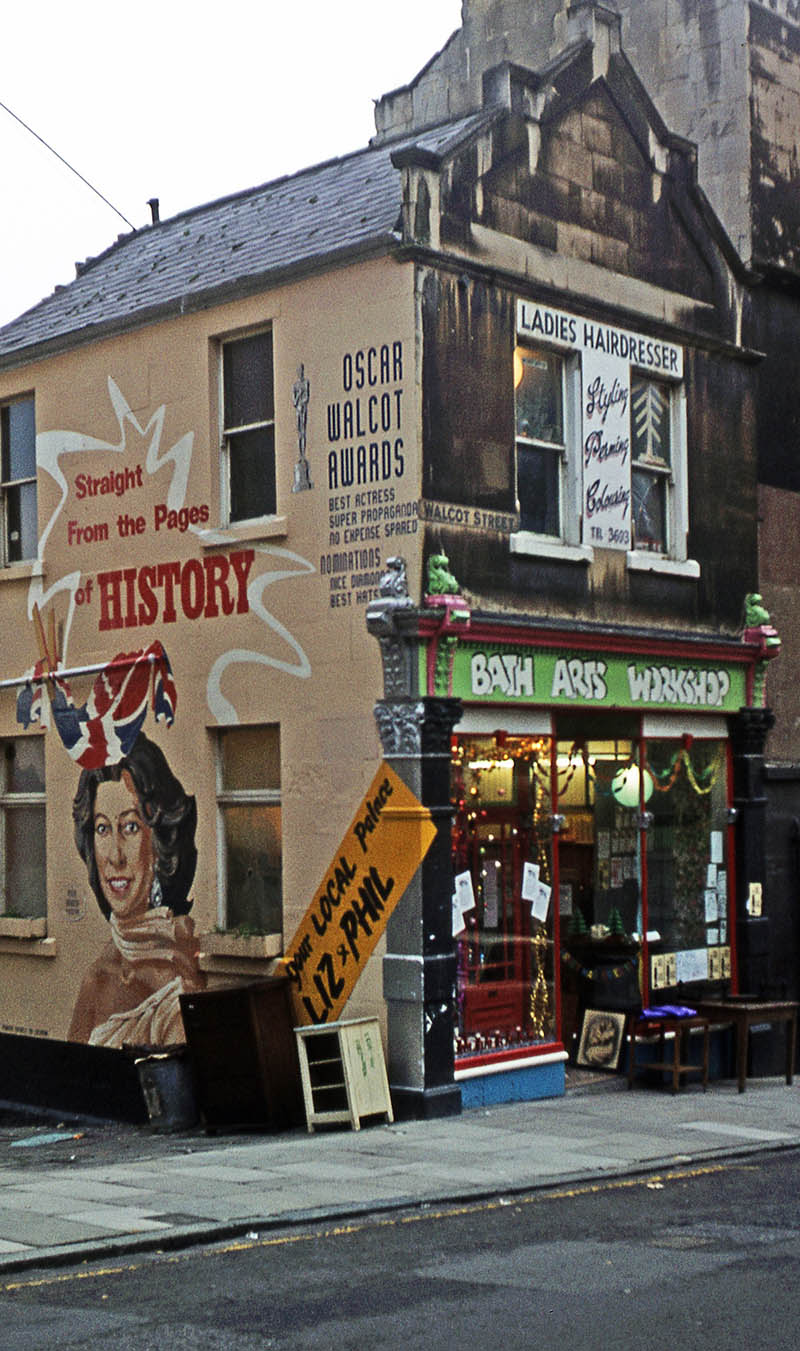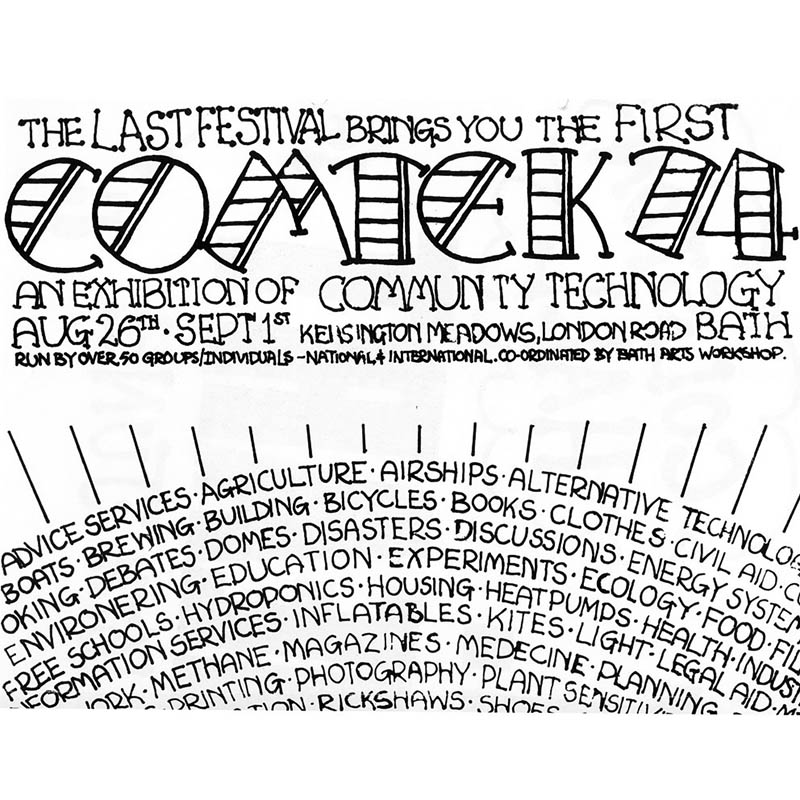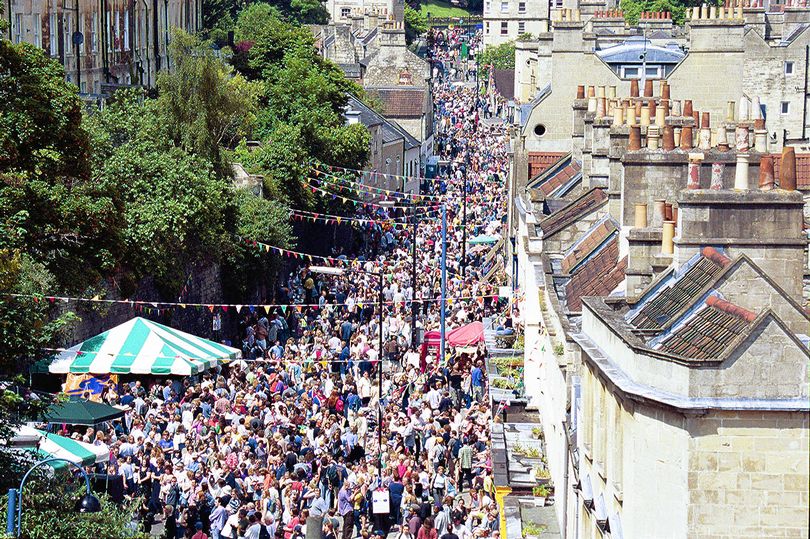What Have The Romans Ever Done For Us?
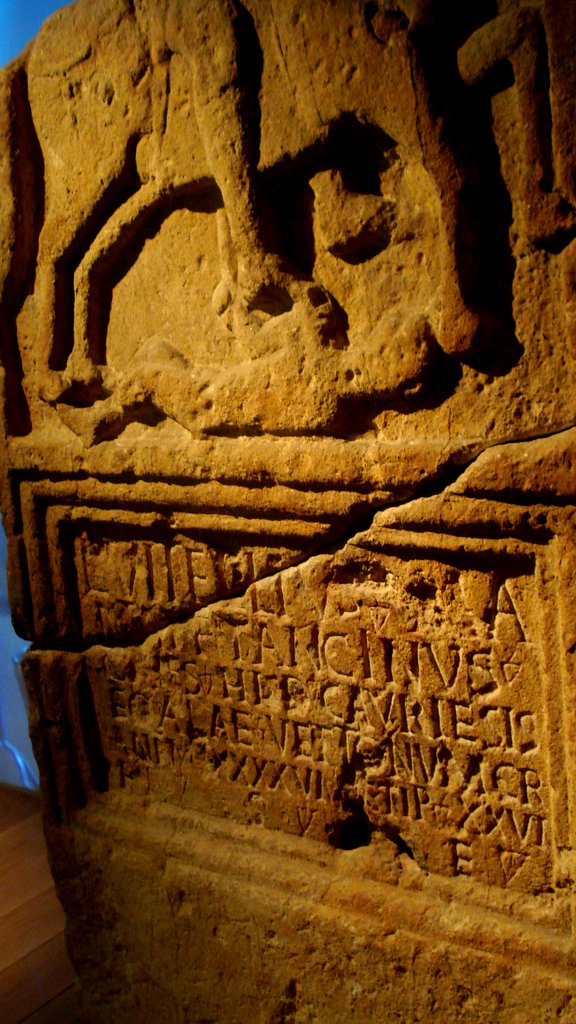
Studies indicate that Walcot formed a focal point for the local road network in the Roman period, in much the same way as it does today. From excavations and casual finds it is known that Walcot Street was also an area of dense Romano - British occupation.
It is probably the oldest commercial street in Bath. Since the late 1980s, evidence gathered by Bath Archaeological Trust at the northern end of Walcot Street has led to a complete reappraisal of the development of Bath as a town during the Roman occupation of Britain. Prior to these excavations the Baths and Temple complex, begun in mid 1st century, was widely considered to have been the main focus of Roman urban activity.
However, there is a strong possibility that the complex may have stood in isolation in an area of open countryside when it was first completed. The lack of urban characteristics in the early Roman period in the area around the baths suggests that the focus of these activities may have developed here at Walcot. Indeed, there is enough evidence to suggest that there was a substantial settlement at the north end of Walcot Street and scattered occupation around and to the south.
The evidence from excavations showed that people settled in Walcot shortly after the invasion in 43AD but before the Baths and Temple were built by the springs. They founded a settlement that grew rapidly in the first two centuries into a bustling small town, capitalising on the tourist trade provided by the Temple and Baths. The influx of people from the Roman Empire included highly skilled stone masons, carpenters, blacksmiths, potters, and glass makers. They brought with them new skills in stone carving, metal working and glass blowing. Trade and industry flourished and the area around the Hat and Feather yard grew to become a mix of workshops and domestic dwellings that remained in use until the fourth century AD.
A wooden Roman fort probably stood just north of the centre of Bath in Walcot, to help protect the vitally important crossing point of the River Avon. Roman burials from Walcot [pictured above: Grave Stone of Tancinus, Roman Solder found in Walcot] indicate soldiers from the Second Legion and the Twentieth Legion (Legio XX Valeria Victrix) where either stationed or retired in Bath. The links to trade are also reflected in the graves. The remains of a Syrian man, thought to be a trader, have been found in Walcot.
A Bit of History
The Rise and Fall of Walcot
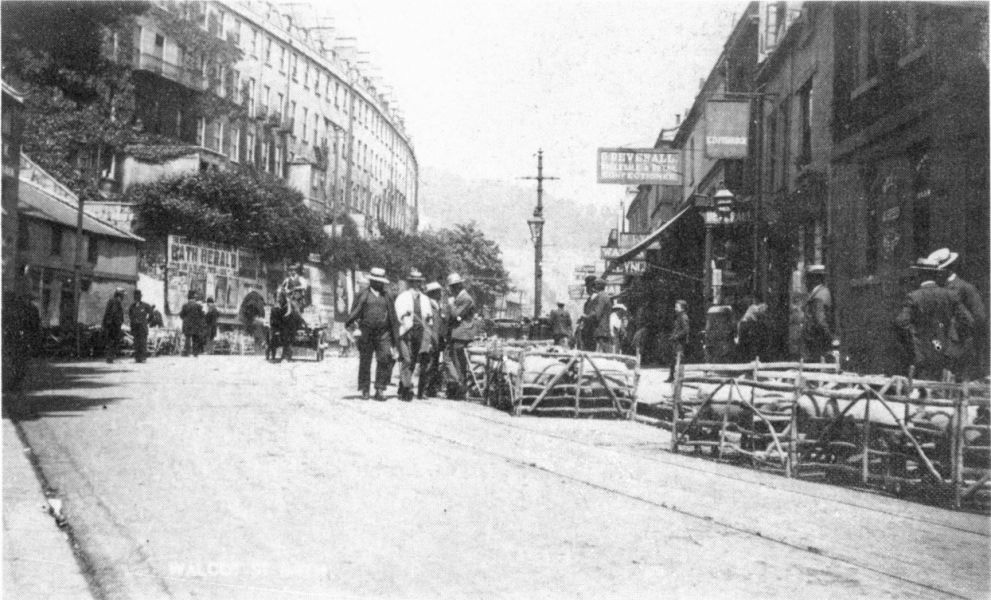
By the 14th century Bath had became well known for its cloth industry, Walcot Street ‘besyde Bathe’ (where Chaucer’s Good Wife of Bath would have lived) being the main production area, although the records also indicate a wide variety of other trades in that area. Even as the cloth industry abandoned the old guild towns for the countryside during the 16th century, the largest group of weavers connected with the city still held property in Walcot Street in the early 17th century.
There was an increase in commercial activity in Walcot Street in the 18th century, particularly after the construction in about 1770 of Sayce & Kelson’s famous ‘Northgate Brewery’. This became one of Bath’s most successful industries, and by the mid 19th century the brewery was rated the largest in the West of England. It was the first firm in Bath to employ steam power
In April 1809 the Council paid £500 for land ‘behind the houses in Walcot Street’ to build a cattle market. This land, which consisted of two large gardens on the south side of the Ladymead Brewery, was converted to an open arena bounded on the east side with a large five-storey granary or store-house backing onto the river. By September 1811 these works were complete when the vaults beneath the market were leased to a grocer - an indication that wholesale vegetables were also marketed here, including potatoes which were sold in the street until the 1830s
With the arrival of the Great Western Railway however, Walcot Street was already beginning to lose its importance, becoming a decayed area of public houses, shops and light industry, and for the next hundred years there were few changes. [Source: BANES - pdf file]
The Walcot Workhouse

Eden in his 1797 survey of the poor in England, reported:
Walcot in the city of Bath maintains the poor partly in a Workhouse [pin-making] and partly at home. At present (Oct. 1795) 101 are in the workhouse. The contractor receives an allowance of 2/ 6 a week for each person, besides an annual allowance of £40. In consideration of the dearness of provisions, the parish has lately given him an addition of six guineas a week. He provides every necessary wanted in the Workhouse.
The parish pay 294 regular out-pensioners. About 10 or 12 receive casual relief. Settlements are gained principally by service. There are only two farms. Rent of land, 50s to 60s an acre. Land tax under 1d in the pound. There are several friendly societies, but no information could be obtained about them. Butcher's meat costs 4d to 5d per lb. labourer's wages, 14d to 18d. a day. Four sixpenny rates on the net rent were collected in 1794, each of £718 4s 9d, but £200 remains unexpended. The rates for two or three years back have been nearly the same. A considerable part of Bath stands in this parish, and most of the houses have been built in the past 50 years.
The Walcot parish workhouse was located at the south side of the London Road and was rebuilt in 1828. It still stands and the building is now used as retail premises. [source: The Workhouse]
FEMALE PENITENTIARY
Bath was not only the 18th century centre of the 'Age of Elegance' but the centre of unashamed licentiousness. A past where the great city's historic streets were literally teaming with prostitutes.
The Walcot Street, Avon Street and the Holloway district of Bath were notorious for centres of the sex trade.
Prostitution was so rife in fact that by 1805, when Jane Austen was a resident, a Female Penitentiary and Lock Hospital had to be founded in Walcot to tackle the problem. Although the Penitentiary offered prostitutes salvation from walking the streets it was only in exchange for some 'honest toil'. The charity arranged for the women to take in washing and ironing. The large garden behind Ladymead House in Walcot Street made excellent drying grounds.
The first women were admitted to the Bath Penitentiary were Eliza Davey and Jane Matthews, both of who were aged seventeen. The youngest applicant was admitted to the Lock Hospital in March 1820 and was described as an 'unconsenting little sufferer of only nine years old '.
In March 1820, a survey of the previous four years was produced. This can be summarised as follows: -
Total Applicants
143
Admitted 83
Rejected as improper 15
Refused for want of room 45
Of those admitted:
Died 8
In service with good characters 12
In house and behaving well 30
Discharged 22
Left the house 3
Returned to friends 5
Returned to parish 3
The Poolemead Home for Deaf Women
THE CORN MARKET AND CATTLE MARKET
Hedgemead Park
Over the next few years a series of landslips occurred resulting in burst water mains, sewers and gas leaks. But in 1881 a landslip destroyed or damaged one hundred and thirty-five houses that resulted in many homes being judged unsafe. The Council deemed it prudent to have the people evacuated.
However, it took a further land slippage in 1883, before calls were made for the creation of an ‘open space’ - Hedgemead Park, which was finally opened on the 19th July 1889
Being one of the earliest of the Bath “Pleasure Grounds”, the park’s maintenance base was on site in the area now occupied by the children’s play area.
Here, over the years up to the 2nd World War, there were expansive glass houses that for a time supplied not only the Park itself, but the Pump Room and other Council Buildings,
Following extensive war damage in 1942 to not only the glass houses, but also the lower shelter and the public lavatories down on the London Road, all were eventually removed, and on the site of the glass houses, the long-promised Children’s play area was finally created in the 1950’s.
A pathway which predates the creation of the park was probably a route from the River Avon upward to the Camden Crescent area. This sunken passageway, separated from the park by railings, divides the park into two sections – the smaller northern section entered by the London Road gates, and the southern part, entered by the Lansdown Road gates, that still contains a number of original features. [source: Friends of Hedgemead Park]
The Walcot Tunnel
The 70s
Walcot Rising
BATH ARTS WORKSHOP
COMTEK
Comtek began as the Bath Community Design Workshop in 1973 with three people from Bath Arts Workshop. Their aim was to make themselves and others aware of the potential for controlling society and technology. The two basic elements of their philosophy were energy conservation and the interdependence between each person and the local community.
Comtek reached the community through festivals which involved local people in the planning and organising of events. They estimated that nearly a quarter of the population of the city was involved during the 1973 "Another Festival".
At Comtek'74 an exhibition of Alternative Technology drew participants from all over the country. After Comtek'75, with activities such as a forge and metalwork shop and information on urban agriculture, technology weekend workshops were run. The themes explored were solar and wind energy and greenhouse / fishfarm installations.
WALCOT FESTIVALS
The first festivals organised by Bath Arts Workshop (1970 - 1973) were called The Other Festival, as an alternative to the main Bath international Festival.
In 1972 they had the use of the 60 room Cleveland Hotel in Pulteney Street, owned at that time by Charlie Ware. It was opened by Rocky and the Jets, who arrived by helicopter. Hawkwind played at the hotel. This was the first festival to be recorded on film by Workshop Films.
1973 was called Another Festival, as they were expected to continue. This was an ambitious three site festival held in Walcot, Twerton and Oddown, as well as Bath Theatre Royal, owned by Charlie Ware at the time. Temporary structures were built by Comtek in the form of domes. Alan Ginsburg made an impromptu performance at the Twerton Dome to an audience of teenage boys.
The 1974 festival was called The Last Festival as money worries from the 1973 festival suggested it could be the last! This time a huge big top visited each of the three sites. An exhibition of community technology - COMTEK ran a four day festival at Kensington Meadows featuring "The Solar Trumpet", "Recycling a car" and "Whacky Races for kids".
1975 It rained this year. The events moved to the Burial Field.
1976 was very aptly called The Sunshine Festival, even though the theme was decided in January! The colour yellow played an important role, as did sunflowers. Comtek built a huge walkway on scaffolding along the site and built wind generators made from vehicle parts and solar panels made from old household radiators, amongst other things. The cost of the festival was £4,700 and money was raised mostly from the Arts Council and Bath City Council. A memorable event was Motorhead and AC/DC at The Pavilion.
1977 was the Silver Jubilee year and the festival was cut down to a one day Garden Party.
People were saddened by the small scale of the 1977 festival and brought about a change by organising a festival committee.
The Beano Club started at the Walcot Village Hall and ran as a weekly cabaret to raise funds for the festival.
1978 was a four day festival called The Walcot Beano. The program was in the style of a Beano comic.
1979 was Walcot Nation Festival of Independence. Each day during the festival there was a daily change of rule which meant that a new ruler could be seen at events.
After 1979 the festivals were run by a committee and not run solely by Bath Arts Workshop.
WALCOT NATION DAY 2000
"On Sunday 11th June 2000 we will once again close the streets, put up banners and bunting, eat and drink and laugh and dance, as the cream of Walcot's golden youth entertain us with their musical virtuosity and merry pranks.
Don't forget your passport!"
Back in 1997 shop traders in Walcot Street headed by Martin Tracey (Framing Workshop) decided it was about time to re-live those festival days of the 70's and reclaim Walcot as an Independent Nation (The first Independent State of Walcot was in 1979) and with help from Bath Fringe began to prepare for a Street Closure and festival of magnitude, with band stages, bars, street theatre, children’s entertainment and lots of fun for all. It was a total success and continued from then, becoming a social calendar event, up until 2006.
Walcot Nation Day Listings 2000
MAIN STAGE
12.30pm LONDON RD CHOIR
1.30pm OPENING CEREMONY - BABAZOOKA ‘The Statue¹
2.15pm K CHEVERE 5-piece Latin/Brazilian combo
3.00pm YOUR DAD Surrealists in string vests
3.45pm LAUGHING SAM S DICE Psychedelic funk/blues
4.30pm BILL SMARME & THE BUSINESS Country n¹ Twerton
5.15pm HEADBOUND Walcot¹s No 1 Party Posse
6.00pm JOHNNY G Return of the Nation’s favourite one man orchestra
